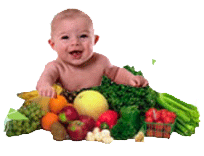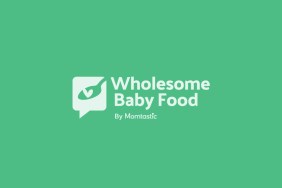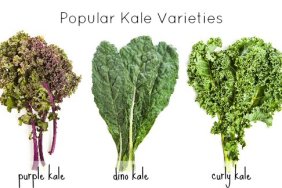The Wholesome Baby Food Quick Start Guide to Making Homemade Baby Food
By making your baby fresh homemade baby food, you can offer your baby more flavors and variety and only the finest quality ingredients. Save money and food waste by offering your baby the foods that the whole family eats!
Tips for Safe Baby Food Preparation:
Always wash your hands before preparing foods for your baby.
Ensure your cutting board, utensils, pots and pans, processing equipment and storage containers have been thoroughly washed and cleansed.
Wash, peel and pit fruits and vegetables as needed.
Cover and refrigerate or freeze cooked food immediately once you have processed or prepared the food.
Store pureed foods in the refrigerator for no more than three days.
The Tools You Will Need
![]() Blender, Food Processor, Food Mill/Grinder, Potato Masher, Fork, Sieve or Strainer
Blender, Food Processor, Food Mill/Grinder, Potato Masher, Fork, Sieve or Strainer
![]() Pots, Pans and a Steamer Basket
Pots, Pans and a Steamer Basket
![]() Ice cube trays or other freezer safe containers in small sizes (2oz-4oz)
Ice cube trays or other freezer safe containers in small sizes (2oz-4oz)
![]() Freezer bags and permanent marker
Freezer bags and permanent marker
Various Methods for Making Baby Food
Here are a few ways you can make homemade baby food.
Mash It!
Many foods can be mashed with a fork or potato masher. Foods such as ripe bananas, avocados and soft cooked foods such as sweet potato, apples or squash can all be made with a fork or potato masher. Using a fork or masher will depend on what type of texture your baby requires.
Use a Food Mill
Cut the food into pieces. Put the cooked food through the food mill. (The skin and seeds will stay in the mill.)
Chop or Grate Baby’s Food
Foods can be finely chopped or grated (with a cheese grater), then mixed with liquid. This is great for babies who are self-feeding.
Food Grinder
A food grinder can be used to grind up foods for your baby. This is a simple way to prepare meats and more textured foods. The food grinder is also great to take on vacation or when dining out with baby. You can quickly and easily grind up fresh baby food in your hotel or at the restaurant.
Blender or Food Processor
Add your cooked food to your blender or food processor and blend to the consistency your baby requires. If needed, add liquids such as breast milk, formula, water or the cooking water from the food you cooked to thin out the baby food.
Sieve or Strainer to Finish Homemade Baby Food
Many parents like to use a sieve or strainer to further thin homemade baby food. These gadgets may be particularly useful for foods that have stubborn skins, such as peas and green beans. Put the food into the sieve or strainer and push it through into a clean bowl. Repeat the process as many times as you need.
Storage Methods for Homemade Baby Food
An easy way to freeze homemade baby food is to use ice cube trays.
Freezing in ice trays will give you food cubes that are the perfect size. These food cubes are also easily portioned.
Each ice tray cube slot equals approximately 1 ounce of food. Using the food cubes method, you will have minimal waste and will be able to “mix and match” foods for your baby. Remember to never freeze foods in glass that is not manufactured specifically for freezing!
How to make and store baby food cubes
![]() Spoon the baby food you made into ice cube trays using a clean utensil and cover the filled trays with plastic wrap.
Spoon the baby food you made into ice cube trays using a clean utensil and cover the filled trays with plastic wrap.
![]() Freeze baby foods in ice cube trays.
Freeze baby foods in ice cube trays.
![]() Once the food cubes are frozen, pop them out of the trays and store in clean freezer bags.
Once the food cubes are frozen, pop them out of the trays and store in clean freezer bags.
![]() Your food cubes will store for up to 3 months in the freezer.
Your food cubes will store for up to 3 months in the freezer.
If you have difficulty popping out the frozen food cubes, simply run warm water on the underside of the tray to loosen the cubes.
Be sure to label your freezer bags of food cubes; include the date you froze them as well as the name of the food.
Heating and Thawing Methods for Homemade Baby Food
Here are a few ways you may thaw and heat homemade baby food. Baby food does not always have to be heated to be served. Offering your baby a few meals that are room temperature will be helpful in the event you are out and unable to find somewhere to heat baby’s food!
Microwave Thawing of Baby Food Purées – If you are using a microwave to thaw or reheat baby food cubes, be sure to stir food to ensure no hot-pockets are left to burn baby! Many parents do not like to use the microwave for a variety of reasons. It is up to you to decide if heating or thawing your baby food cubes in the microwave is right for you and your baby.
Refrigerator Thawing of Homemade Baby Food Cubes – If you do not wish to use a microwave to thaw your baby food cubes, you may thaw your baby food cubes in the refrigerator over night (ensure that the cubes remain a closed container and not in an uncovered bowl).
Submersion Thawing of Baby Food Cubes – Place the frozen baby food cubes in a small bowl and then place the bowl in a larger bowl filled with hot water.
![]()
Basic Ways to Prepare Foods for Baby Foods
FRUITS (4)6 months +
For Fruits That Need to be Cooked
Wash the fresh fruit and peel and pit if necessary. Frozen fruits do not need to be washed however you may give them a quick rinsing. Steam or bake the fruits until tender and soft.
Ripe Banana and Other Fresh Fruits
Ripe bananas and avocados do not require cooking. Pears and peaches may not require cooking if they are fully ripened. Simply peel, pit and mash!
Using Frozen Fruits
If your choice of fresh fruits is not available, frozen unsweetened fruits may be used. Give these frozen fruits a gentle steaming prior to pureeing and refreezing. You may always take a handful of the fruits out of the bag and puree or mash them as needed; keep these prepared fruits in the refrigerator for no more than 3 days.
VEGETABLES (4)6 months +
All Vegetables Should be Cooked
Wash the vegetables and peel and deseed if necessary. Cook the vegetables by steaming or baking them.
MEATS AND PROTEINS 8 months+
Do not use lunch meats and do not use smoked meats such as bacon due to the high levels of salt and additives.
Basic Meat Recipe
Puree or grind 1 cup finely cubed and well cooked meat with as much liquid as needed to make a consistency your baby will tolerate. Grating or shredding meats is an option for babies used to texture and finger foods.
Egg Yolk
Boil the eggs (they will spin when they are fully cooked) and then allow to cool. Peel the shells and remove the cooked yolk; mash with a fork. Do not serve the egg white until baby is 12 months old.
 Download this Quick Start Guide – FREE
Download this Quick Start Guide – FREE
![]() Remember, always consult with your pediatrician regarding introducing solid foods to your baby and specifically discuss any foods that may pose allergy risks for your baby.
Remember, always consult with your pediatrician regarding introducing solid foods to your baby and specifically discuss any foods that may pose allergy risks for your baby.
![]() This site complies with the HONcode standard for trustworthy health information:
This site complies with the HONcode standard for trustworthy health information:





